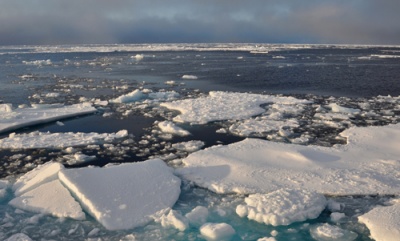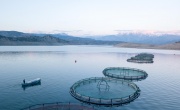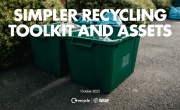Harmful plastic waste from UK’s coast damaging fragile Arctic Circle
 Within just two years of being deposited, a ‘large fraction’ of plastic waste that reaches the ocean from the UK’s coasts ends up in the Arctic, where it can cause ‘extreme harm’ to wildlife, according to researchers studying ocean currents at Imperial College London.
Within just two years of being deposited, a ‘large fraction’ of plastic waste that reaches the ocean from the UK’s coasts ends up in the Arctic, where it can cause ‘extreme harm’ to wildlife, according to researchers studying ocean currents at Imperial College London.
Using ‘Plastic Adrift’, a tool the team of scientists from the university’s Grantham Institute developed to track waste carried by the ocean’s currents, they discovered that much of the plastic waste washed into the sea from the UK coastline sinks to the ocean floor and drifts over two years towards the Barents Sea, north of Norway, before circulating in the Arctic Ocean.
In doing so, it contributes to the growing amount of plastic already present in the Arctic, which can harm or even kill marine organisms when they get tangled up or consume it.
A study published last month suggests that fish that have grown up around plastic prefer to eat fragments of the material to their natural prey, stunting their growth and making them less wary of predator attacks. According to researchers at Uppsala University in Sweden, the effects of plastic on aquatic ecosystems could be ‘profound’.
The Plastic Adrift Imperial research is being exhibited this week (5-10 July) at the Royal Society’s Summer Science Exhibition in a presentation entitled ‘Plastic not fantastic in our oceans’. Visitors to the exhibition will be able to quiz the scientists about the damage caused by plastic in the ocean.
The team has also produced a briefing paper on the problem of plastic pollution in the oceans and highlights the challenge of ‘finding chemical, engineering and socio-economic solutions for the UK’.
According to the paper, an estimated 4.7 million to 12.7 million tonnes entered the oceans in 2010 alone. The UK is one of the biggest plastic users in Europe, with nearly eight per cent of the European demand for plastic comeing from the country. In addition, the UK together with Germany, Italy, France and Spain account for more than two-thirds of European plastic consumption.
‘Continuous path of destruction from surface to seafloor’
Dr Erik van Sebille, Team Leader from the Grantham Institute at Imperial, said: “We’re only just beginning to understand the effect that plastic waste has on the fragile Arctic ecosystem, but we know enough about the damage done by oceanic plastic pollution to act and reduce its impact on our oceans and coastlines.
“From seabirds caught in loops of plastic packaging to polystyrene particles blocking the digestive systems of fish, plastic causes a continuous path of destruction from surface to seafloor. This analysis shows how in the UK we’re part of the problem.
“It would be impossible to ban plastic, and undesirable as it is a useful material that offers many benefits. We should instead have a holistic approach to improving the situation, including social and behavioural, chemical and engineering solutions – aiming to minimise the amount of plastic that ends up in the oceans and make sure it degrades quickly and safely if it does.”
More information is available at plasticadrift.org and by reading ‘The ocean plastic pollution challenge’ on the Grantham Institute website.







